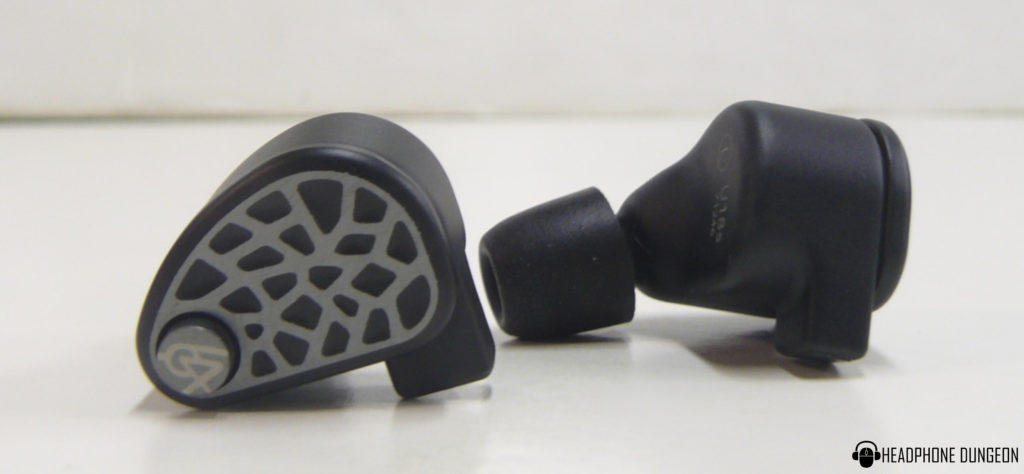A new rendition of 64 Audio’s 18-driver strong technology, the U18s is the brand’s most recent IEM aimed at “true immersion.” 64 Audio says their goal with the U18s is not to just reproduce the performance, but instead bring the listener into it. The brand’s preview 18-driver IEM, the U18 Tzar, along with their 12 and three driver models the U12t and Tia Trió, received a lot of praise, leaving the U18s with big shoes to fill. These go for $2,999, also giving them some pricey shoes to fill. However, 64 Audio is well-versed in designing optimized hi-fi IEMs, and the more you uncover about the design of the U18s, the more sense their price point makes.
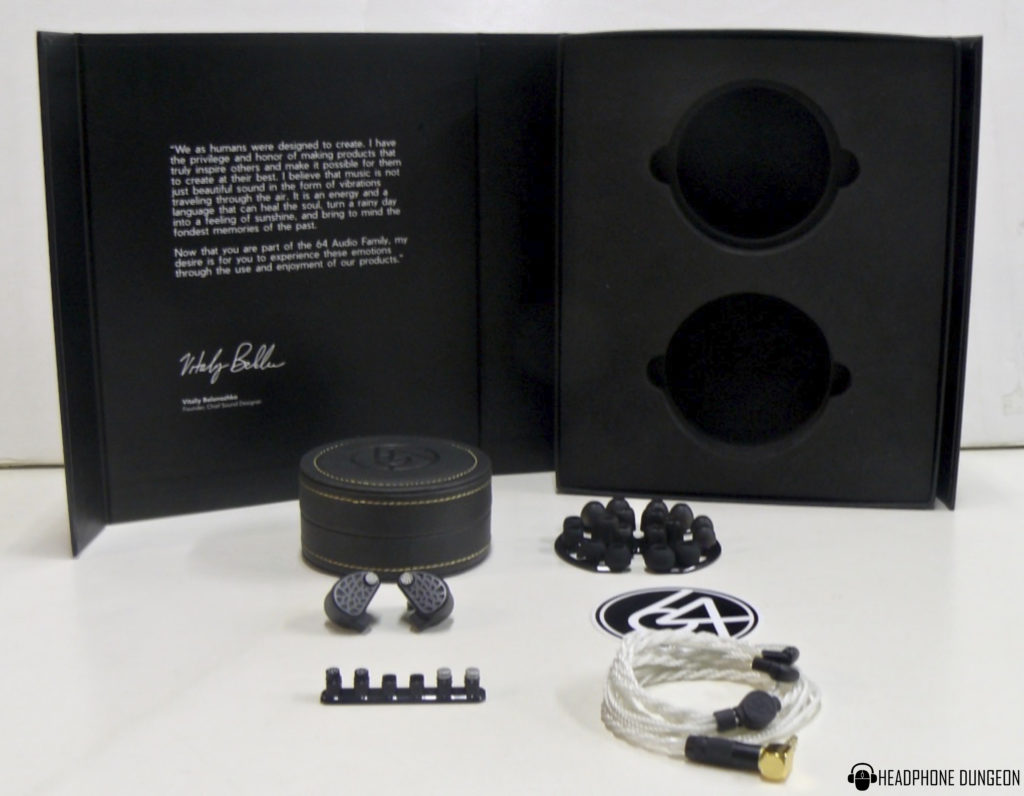
What’s in the box
The U18s come in a box with a magnetic seal and strong foam padding surrounding the contents. If you wanted to store these somewhere with all their accessories, you could probably do it safely in the original packaging, as it feels quite sturdy. You get a hardshell leather case for the IEMs themselves along with the wide array of silicon and foam ear-tips provided. We also get two additional sets of Apex modules, which offer different levels of isolation—either -10db, -20db, or -15db—using 64 Audio’s Air Pressure Exchange technology that works by sealing the ear canal. Lastly, we get the 8-braid silver cable, which houses 8 conductors.
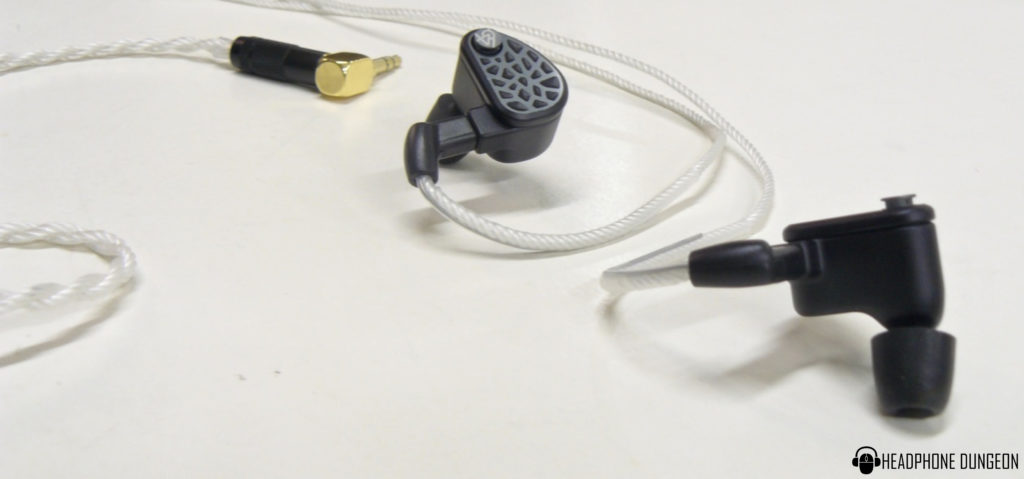
Look and feel
These have a sleek, modern look to them and feel sufficiently sturdy. The geometric silver pattern on the back gives them a unique edge but isn’t over-the-top. The matte black finish on the rest of the body gives the U18s an overall clean, sophisticated appearance. They’re a comfortable size, not much different than most IEMs on the market, and feel sufficiently lightweight when you put them in. They fit well into the natural curvatures of your ear, seeming to lock in a tad once you position them correctly. The braided wire is a metallic silvery-white that adds to their overall high-end look.
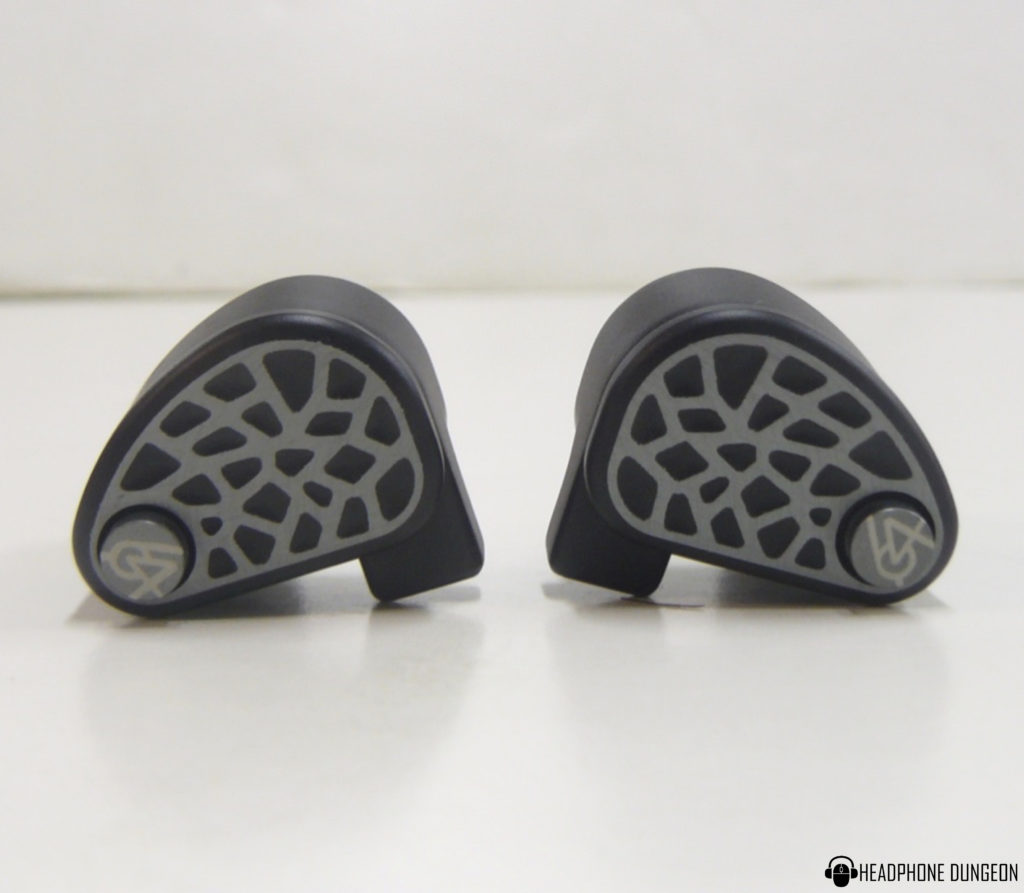
Design
You could probably write a book about the design of the U18s with how many different components are being uniquely built and reformatted. They use 18 open balanced armature drivers in each ear, 8 low, 8 mid, 1 high-mid, and one high. The high drivers in each ear are 64 Audio’s Tia Drivers, which are made without tubes in an effort to eliminate any interference they might cause with the sound. They also feature what is known as Linear Impedance Design, which ensures consistent sound regardless of the source. Additionally, they posses an electrical low pass filter, lowering distortion levels through a circuit targeting unwanted frequencies.
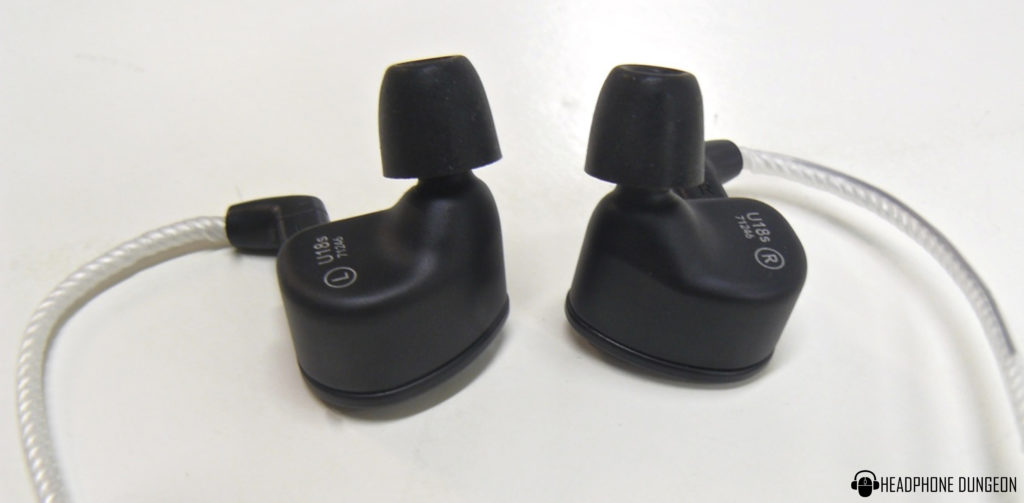
Output
These have a frequency response of 10Hz to 20kHz and a low impedance of only 8 Ohms, meaning they’ll work fine without an amp. Of course, it doesn’t hurt to use one, but I’ve been testing them out both with and without an amp, especially given 64 Audio’s claims about their linear impedance design. These only come with a 3.5mm jack, so if your amp requires quarter inch, you’ll need a converter.
Soundstage
The soundstage on the U18s definitely delivers. It strikes a good balance of sound separation and integration, layering instruments without morphing them into one another. I found it especially succeeds with background vocals and doubled recordings, letting them shine on the sides and fill out the stereo field wonderfully. I tried out a current favorite of mine, “Big Wheel” by Samia, and found its clean, vibrant mix translated beautifully on these. Vocals sit right where you want them to, not too far forward not too far backwards. Their ability to translate width and position keeps busier mixes from coming across cluttered and more minimal compositions from feeling hollow. Overall, the U18s offer a great sense of performance through a refined, well-tailored soundstage. You’ll be taken out of audio-analysis mode and into a musical connection experience without even realizing it. Once these gained my trust, I found an increasing number of songs gave me chills.
Low End
The low end on the U18s isn’t gonna shake the inside of your skull if that’s what you’re looking for, but most of us aren’t. These have a very clean low end, you’re not going to get any muddy frequencies taking you out of the music. The lows stay very accurate and polished, which for the most part I appreciate, though there were times I wanted them to let loose a little more and stray outside the bounds of their tight punch. If you’re into bass heavy music, it’s hard to say if these would be the right fit or not. While they do have a great tone in the lows and considerable power, they excel most when a song’s low end is warm and deepened instead of in your face. Give “Run Away” by Moonchild a listen. I found the analogue synth-driven low end on this song came through seamlessly on the U18s.
Mids
The mids seem to be a big part of what help these sound so realistic. I could say they’re warm or dynamic or rich, which would all be true, but the first word that comes to mind is authentic. They really do mimic how your ears perceive sound in person, offering an abnormal level of intimacy. I listened to “Tudo o Que Vocé Podia Ser” by Milton Nascimento, which features amazing recording of guitar and vocals from the early 70s. The U18s breathed new life into this song, and the immersion 64 Audio prides themselves on all became a reality. The mids don’t feel overly-articulated or modulated, and they never seemed to miss the mark.
Highs
I’ve found high end to be the downfall of many an otherwise great IEM, so I was really counting on these not to let me down, and they certainly did not. The highs on the U18s are incredibly well controlled. They especially excel at giving vocals that silky edge, the small frequency range that sits in the subtle rasp of many voices. I feel like I have to label these as having a notably brighter character, especially compared to other audiophile-praised IEMs. But the high end on these is blended very well, it doesn’t feel singled out the way highs in other bright units can. I tried out “All Rivers at Once” by Sevdaliza, an artist who takes great care with the high end of her vocals and production. Some headphones I’ve used turn this song into a metallic disaster, but the U18s keep the highs relaxed while still allowing them to retain a nice bite. They make themselves known without emitting any unpleasant sonic twinges.
Summary
The stellar quality of the U18s allow them to successfully climb the summit of their steep price. Nuance, versatility, and entrancement: the U18s offers all of these things and more. If you are shopping for IEMs in a higher price range, they definitely challenge their competitors. Whether they’re right for you or not, they’re hard to dismiss. The U18s sets a new standard for IEMs on all fronts and have made me eager to see what 64 Audio gives us next.
Pros and Cons
Pros: Hyperrealistic sound, Clean tonality, Warm mids
Cons: Brighter highs not for everyone, price
The 64 Audio U18s is available at Audio 46

